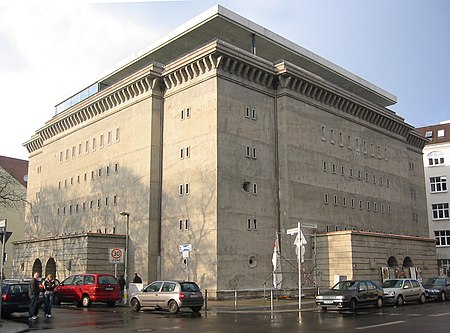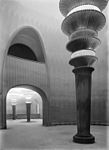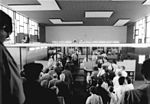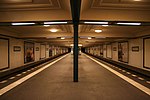Bunker (Berlin)

The Bunker (also Reichsbahnbunker) in Berlin-Mitte is a listed air-raid shelter. Originally based on plans of the architect Karl Bonatz, it was constructed in 1943 by Nazi Germany to shelter up to 3,000 Reichsbahn train passengers. The square building has an area of 1,000 square metres (11,000 sq ft) and is 18 metres (59 ft) high; its walls are up to 3 metres (9.8 ft) thick. There are 120 rooms on five floors. In May 1945, the Red Army took the building and turned it into a prisoner-of-war camp. From 1949, it was used to store textiles and from 1957, as storage for dry and tropical fruit. In the summer of 1992, it was turned into a hardcore techno club. Gabba, hard trance, house and breakbeat parties were held on four floors. However, after a raid in 1995 the events became more irregular. A further raid in 1996 placed severe building restrictions on the tenants, causing the club to close. In 2001, real estate investor Nippon Development Corporation GmbH bought the building from the government. In 2002, it was the venue of the Berlin art festival "Insideout".
Excerpt from the Wikipedia article Bunker (Berlin) (License: CC BY-SA 3.0, Authors, Images).Bunker (Berlin)
Reinhardtstraße, Berlin Mitte
Geographical coordinates (GPS) Address Website External links Nearby Places Show on map
Geographical coordinates (GPS)
| Latitude | Longitude |
|---|---|
| N 52.523333333333 ° | E 13.383888888889 ° |
Address
Reichsbahnbunker Friedrichstraße
Reinhardtstraße 20
10117 Berlin, Mitte
Germany
Open on Google Maps









